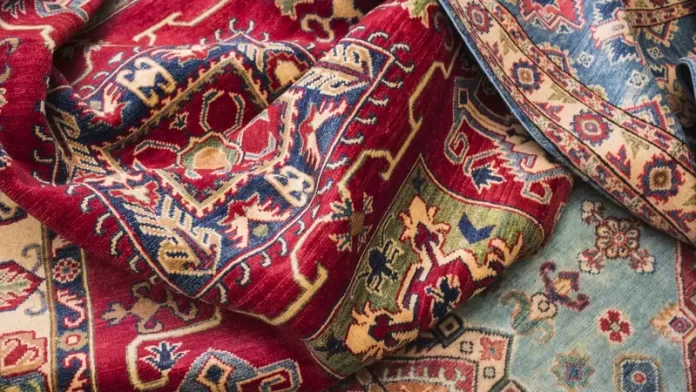The world of handmade carpets is a fusion of artistry and heritage, showcasing the mastery of skilled artisans and their intricate weaving techniques. Central to these carpets is the essential component known as the “pile,” which forms the surface texture. Understanding the role of this pile and the diverse materials like wool, cotton, and silk used in crafting these carpets unveils a rich tapestry of craftsmanship.
Understanding Handcrafted Carpet Piles
In the realm of handwoven carpets, the pile represents the height or thickness of the carpet’s surface. It comprises the visible fibers that create the carpet’s texture, forming a crucial three-dimensional aspect alongside its length and width. The width, known as the carpet weft, runs horizontally, while the length, or warp, serves as the vertical framework.
Diverse Techniques in Handwoven Carpets
Handcrafted carpets employ various techniques, such as Turkish, Persian, and Al-Talifiqi styles, each leaving a distinct imprint on the final product.
- Turkish Weaving: This method focuses on precision, meticulously threading two parallel strands transversely on the frame. Its meticulous nature grants weavers greater control over the carpet’s final weaving process.
- Persian Drawing: In contrast, Persian weaving involves a more organic approach, starting with patterns drawn on the ground before being transferred to the loom. Precision might not be as emphasized as in the Turkish method.
- Combined Drawing: A fusion of Persian and combined weaving techniques, this method selectively blends elements from both styles for specific purposes.
Variations in Carpet Fibers
The choice of fiber profoundly influences the characteristics of a carpet, with wool, cotton, and silk standing as the primary materials, each with unique traits and applications.
- Silk Threads: Valued for their delicacy and strength, silk threads derived from silkworm cocoons are favored for finely woven carpets. Silk-woven carpets boast elegance, durability, and a refined texture.

- Cotton Yarn: Derived from the cotton plant’s fibers, cotton threads offer durability and adaptability. They are commonly used for both warp and pile, offering flexibility in color variations.
- Woolen Skein: Historically, wool sourced from animals like sheep or goats was the primary material for carpets. It provides insulation, durability, and resilience, although contemporary weaving explores diversified uses.
Distinct Types Based on Fiber Composition
Handwoven carpets span diverse categories based on their fiber composition, resulting in unique varieties:
- All-Wool Carpets: Mainly composed of wool in both warp and pile, though modern versions might integrate cotton fibers in the pile while retaining wool for the warp.
- All-Silk Carpets: Exuding opulence, these carpets feature silk in both warp and pile, symbolizing luxury and sophistication.
- Silk Accent Carpets: Incorporating wool and silk, these carpets use silk for intricate patterns or edging, while the primary pile might consist of wool.
- Souf Carpets: Predominantly featuring silk in the warp, these carpets occasionally incorporate cotton for specific purposes.
- Silk Fluff Carpets: A rare luxurious type, these carpets blend silk tufts with additional materials like cotton or linen, elevating their opulence.
Selecting the Right Handcrafted Carpet

Choosing the perfect carpet hinges on various factors such as durability, aesthetics, and practicality:
- Silk or cotton piles tend to resist pests more effectively than woolen piles.
- Silk-based carpets exhibit superior longevity, followed by cotton and wool counterparts.
- Silk and cotton maintain structure better due to their less elastic nature compared to wool.
- For allergies and sensitivities, silk and cotton carpets are preferred.
- Silk carpets exude elegance, while wool carpets offer affordability.
- In terms of quality, silk and cotton outshine woolen carpets.
- For softness and comfort, silk and cotton piles prevail over wool.
- Wool carpets excel in high-traffic areas and cold climates due to their durability and insulation.
Handcrafted carpets embody tradition, skill, and artistic finesse. The selection process becomes an exploration of personal taste and practical needs, aligning a carpet’s characteristics with individual preferences.
In Conclusion
This comprehensive overview unravels the intricacies of handcrafted carpet piles and materials, revealing the artistry behind carpet weaving. From understanding pile construction nuances to discerning between wool, cotton, and silk fibers, the essence of each material in crafting these exquisite textiles comes to light. Choosing the ideal handcrafted carpet becomes a harmonious blend of aesthetics, functionality, and individual expression, making it essential to grasp the nuances of these materials for an informed decision.




